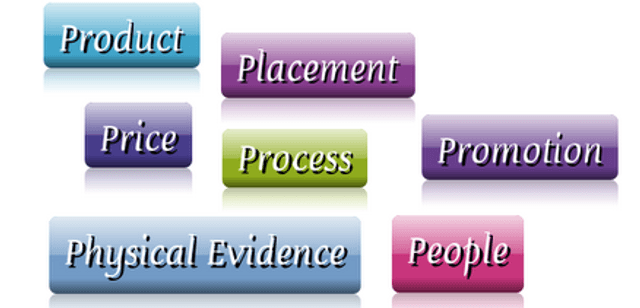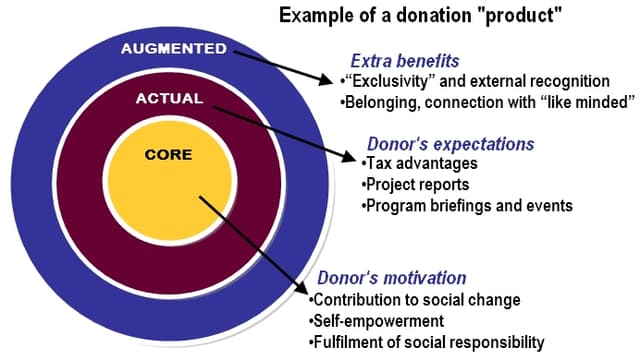What can fundraisers learn from product marketing?
- Written by
- Sarah Clifton
- Added
- August 06, 2015
In the autumn of 2014 I attended my first International Fundraising Congress (IFC). Being a bit of a data geek, I most looked forward to a workshop entitled ‘new product development’. I expected to hear about all the fabulous new database and CRM tools on the European market. Silly me. The session turned out to be about the process of developing fundraising ‘products – as in ways and benefits of giving – within your own organisation. What I had always heard termed a ‘gift type’ in America.

Fast forward six months and I am writing a paper on product marketing for a management course. Here it was again. So I had to ask myself, ‘How can I, as a fundraiser, use any of this in my programme?’
It turns out that product marketing has a lot to do with the way that we think about raising funds. And applying a commercial marketing checklist to our fundraising strategy can give us some valuable insights about the way that our donors experience our service. So it is useful to consider each of the seven ‘Ps’ when designing your fundraising strategy.
Product
Ask not what your donors can do for you; ask what you can do for your donors.
As unique as your organisation may be, there are still others competing for the same donation. So, you need to think about what you offer your members, donors and supporters in exchange for their loyalty.
This need’nt be ‘rewards’ in the form of gimmicks or premiums. In fact, what makes your organisation most valuable are the intangible benefits (a sense of having made a difference or saved a life, for example).
At a minimum, what you offer the donor must address their core motivation for making a gift. But they also have expectations that you should meet and ideally exceed. In fundraising terms, we should think of basic good stewardship.’
The ‘extras’ are the ‘icing on the cake’ that make you stand out in the marketplace. These may not be necessary to raise a donation, but they could make a big difference between the donor’s experience of your organisation compared to another. And in terms of loyalty, that may make the difference between, as 101fundraising blogger Reinier Spruit wrote, a ‘one night stand’ and a long-term relationship.
Promotion
Seemingly, promotion is the easiest aspect of your fundraising to plan. But it can also be the most complicated. Promotion goes beyond just your marketing channels – it also requires you to think about things like:
- How is the need for funds within your organization being translated into the case for support? Is it clear to donors what the funds are needed for and how they will be used? Is it compelling? And most importantly, is it honest? Does a donor understand your case well enough to be able to explain it to his/her friends and coworkers? Is your message strong enough and memorable enough to create a network of enthusiastic donor ambassadors?
- What are donors hearing about you in the press and from their friends? Does this coincide with what they are hearing from you? Is there “noise” interfering with your message or is your promotion so well coordinated that all media channels are reinforcing your case for support?
Price
Are you an organisation that focuses on raising high-value gifts, or one that raises small gifts from a larger pool of donors? Do you focus your upgrade efforts more on major gifts or on legacies? Do you need to consider testing premiums? Do you need to offer donor circles or other benefits? These are all basic questions relating to the ‘pricing strategy’ that you use to attract the type of donors that will sustain your work.
Place
Place describes the medium in which you are raising funds. Door to door, online, through collection boxes in shops, by mail? For each organisation there will be a different combination that delivers the best results. In planning your fundraising strategy, consider what each of these channels has to offer as well as the risks and disadvantages.
People
More often then not, your most loyal donors will come in contact with members of your team – by telephone, at an event, or (fingers crossed) during a personal visit. We all know that people give to people so make sure that those carrying your water those that donors are most likely to click with. The enthusiastic volunteer is probably a better choice to be answering the phone than an overstressed member of staff. And the inarticulate database geek is probably not the best choice to put behind the registration table at an event, even in a pinch.I say this, by the way, having been stuck behind a table more than once.
Process
Monitoring your internal processes will help you to measure not only your ‘tangible’ fundraising performance, but also the efficiency and effectiveness of your operations. This can be as simple as ensuring that complaints are addressed and that every gift is acknowledged.
These may seem less important than ‘direct’ fundraising results, but monitoring processes can also give you insight into how the donor is views you. Furthermore, it can showwhetheryou have the capacity to expand your programme, or ifyou need to focus first on getting your house in order.
Physical evidence
Last, but not least, physical proof of your good stewardship. This can be as simple as sending a physical thank-you letter for each and every gift: yes, even gifts made online. But think big! Do you invite your donors to drop into your office? Do you hold events? How do the physical spaces in which you interact with your donors reflect your organisation’s values? Are they hip and fun? Great if your donors are young and creative, not so great if they are older and conservative. Sombre and depressing? Probably never great.
The seven “Ps” may be just good common sense, but for me, they are a challenge to think less as a fundraiser and more as a donor. I hope that they for you at least inspire some reflection. And next time you go to IFC, maybe catch that “products” workshop after all.



















